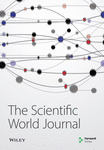Defining the Thrombotic Risk in Patients with Myeloproliferative Neoplasms
Abstract
Polycythemia vera (PV) and essential thrombocythemia (ET) are two Philadelphia-negative myeloproliferative neoplasms (MPN) associated with an acquired mutation in the JAK2 tyrosine kinase gene. There is a rare incidence of progression to myelofibrosis and myeloid metaplasia in both disorders, which may or may not precede transformation to acute myeloid leukemia, but thrombosis is the main cause of morbidity and mortality. The pathophysiology of thrombosis in patients with MPN is complex. Traditionally, abnormalities of platelet number and function have been claimed as the main players, but increased dynamic interactions between platelets, leukocytes, and the endothelium do probably represent a fundamental interplay in generating a thrombophilic state. In addition, endothelial dysfunction, a well-known risk factor for vascular disease, may play a role in the thrombotic risk of patients with PV and ET. The identification of plasma markers translating the hemostatic imbalance in patients with PV and ET would be extremely helpful in order to define the subgroup of patients with a significant clinical risk of thrombosis.




